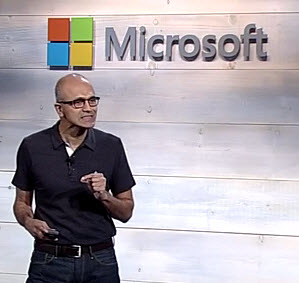With a new platform-neutral Microsoft, why go Windows?

Not so long ago, Microsoft execs told customers they could count on the company to deliver first and best on Windows.

But in the new, platform-neutral Microsoft — where new apps and services increasingly appear on iOS and Android before Windows or Windows phones — why should users bet on Windows?
It's a good question and one I've struggled to answer lately when asked, as I am being. Repeatedly.
I don't think I'm the only one wondering what to say. I'd challenge CEO Satya Nadella to make a case for Windows at the moment — beyond his statement to a small group of selected press last week that Windows, Office 365 and Azure are Microsoft's core products and everything else Microsoft is selling is supplemental.
Just last week, Applications and Services Group Chief Experience Officer Julie Larson-Green told those at that same press gathering that Microsoft will be bringing Cortana, its personal digital assistant, to iOS and Android. Last year, Microsoft officials hinted that making Cortana cross-platform was a discussion topic inside the company. But Larson-Green's statement makes it appear as if the decision has been made and it's only a matter of time until Cortana isn't just for us Windows users.
Microsoft's new Sway app is coming to iOS before Windows or Windows Phone. The Revolve contact-calendar mash-up app the company showed off in very early preview form will debut on iPhone. Office on iPad and Office on Android beat to market the touch-first Office suite, known by some as Gemini, by months (or in iPad's case, more than a year).
It's almost as if Microsoft — which has a history of overcorrecting when it makes a wrong turn (see making Windows Phone a consumer platform without enterprise support for years, for just one example) — is so intent on proving it's not the Windows company any more that it's leaving Windows users out to dry.
Read this
Time is working against the company with regard to Windows. The company is continuing to strive to bring its various Windows flavors together and has taken some key steps toward doing so. There is a tech preview available of Windows 10, but the consumer preview, as well as a preview build of the coming Windows 10 flavor for phones and smaller tablets, isn't expected until early next year. Windows 10 will bring together the evolving common core (OneCore), a single Windows Store for PCs, tablets and phones, and a more common user interface and developer stack.
Until early next year, when those new preview builds and, after that, new devices built to take advantage of the new Windows 10 features, are available or visible, Windows and Windows Phone users are left to feel like second-class citizens. From what sources are saying, there are no new flagship Windows phones coming the rest of this year. There aren't even any new Office builds to play with, as the coming touch-first Office release isn't slated to arrive until Windows 10 does, which right now is around the summer of 2015.
While early 2015 isn't really that far away, waiting is the hardest part. As a long-time Windows user, the prospect of switching platforms simply because they are the dominant mobile ones, and not necessarily the ones I know and am accustomed to, isn't a savory prospect. However, if there aren't any shiny new Windows 10/Windows phone 10 toys by the first part of next year, it may be a realistic prospect.
For now, Microsoft is still both a productivity and platforms company. Whether "platforms" will include Windows and Windows phone, and not just iOS and Android, going forward, depends a lot on what happens in the next few months.